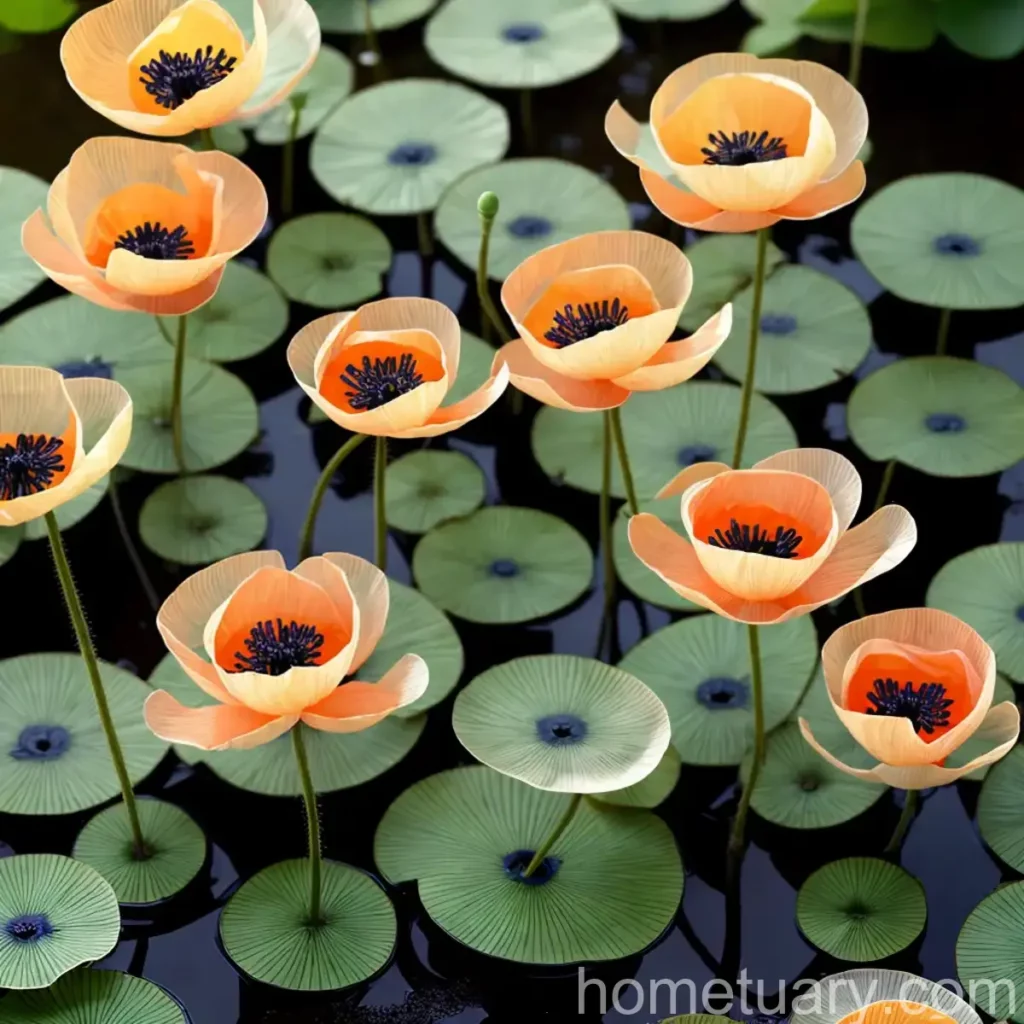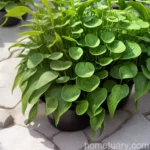The Fascinating Water Poppy (Hydrocleys nymphoides)
Welcome to a comprehensive guide on the water poppy (Hydrocleys nymphoides). Whether you’re a novice or seasoned gardener, this aquatic plant promises to add vibrancy and life to your water garden. Known for its delicate beauty, the water poppy is an exquisite addition that thrives in moist habitats, including ponds and other water features. In this guide, we will delve into the culture, uses, optimum growing conditions, common diseases, and pest control, ensuring you have all the information required to nurture this stunning aquatic plant successfully.
What is the Water Poppy (Hydrocleys nymphoides)?
The water poppy, scientifically known as Hydrocleys nymphoides, is a floating aquatic plant that belongs to the family Alismataceae. Originating from the warm waters of the southeastern United States, Mexico, Central America, and the Caribbean, it has made a name for itself as a popular addition to water gardens and natural wetland habitats. This plant features bright, lemon-yellow flowers that resemble poppies, hence its common name, water poppy. Its circular leaves, which rest on the water’s surface, provide a charming and serene presence, making it a sought-after plant by water gardeners and landscape enthusiasts.
Key Takeaways – Water Poppy (Hydrocleys nymphoides)
- Common Name: Water poppy
- Scientific Name: Hydrocleys nymphoides
- Family: Alismataceae
- Native Habitat: Southeastern United States, Mexico, Central America, and the Caribbean
- Popular for: Water gardens, ponds, and natural wetland habitats
Culture
The water poppy (Hydrocleys nymphoides) is a relatively low-maintenance aquatic plant, making it an excellent choice for both experienced gardeners and beginners. Understanding its cultural requirements is essential for ensuring its longevity and vitality in your water garden.
Uses
-
Ornamental: The water poppy is primarily used for ornamental purposes, adding a touch of elegance and color to water gardens, ponds, and wetland areas.
-
Habitat Enrichment: In its natural environment, the water poppy contributes to the overall ecosystem by providing shelter, food, and a breeding ground for various aquatic organisms.
-
Water Filtration: It assists in maintaining water quality by filtering out excess nutrients and aiding in natural purification processes.
Water
As an aquatic plant, the water poppy thrives in consistently moist conditions. It can adapt to various water depths, but it typically prefers still or slow-moving water. The water temperature should ideally be between 65°F and 82°F (18°C to 28°C).
Sunlight
The water poppy flourishes in full sun to partial shade. Providing it with at least 6 hours of direct sunlight is recommended for optimal growth and flowering.
Fertilizer
While the water poppy can absorb nutrients from the water, using a balanced aquatic plant fertilizer can enhance its growth and flowering. These fertilizers are specifically formulated to provide essential nutrients without negatively impacting the aquatic environment.
Soil
Unlike traditional garden plants, the water poppy doesn’t require soil as it obtains nutrients from the water and sediments. It grows floating on the water’s surface, with its roots submerged and its leaves and flowers projecting above the water.
Pruning
Pruning is generally not necessary for water poppies. However, removing any decaying or damaged leaves and flowers can help maintain the plant’s aesthetics and overall health.
Propagation
The water poppy can be propagated through division or by planting its seeds. Division is the preferred method and involves separating the plant into smaller sections, each containing roots and shoots, and replanting them in suitable areas of the water garden.
Container Popularity
The water poppy is widely popular for container water gardens and ponds due to its ability to thrive in confined spaces. Its compact nature and striking blossoms make it an attractive addition to small water features.
Common Diseases
Like all plants, the water poppy is susceptible to certain diseases that can hinder its growth and overall health. Understanding these diseases and their appropriate management is crucial in maintaining a thriving water poppy population.
Disease Diagnosis
-
Bacterial Blight: Characterized by dark lesions on the leaves, bacterial blight can rapidly spread throughout the water garden if left untreated. It is often triggered by poor water quality and stagnant conditions.
-
Fungal Infections: Common fungal infections in water poppies manifest as powdery mildew or leaf spot, resulting in discolored and deformed leaves. High humidity and inadequate air circulation can exacerbate fungal issues.
-
Viral Diseases: Viral infections may cause stunted growth, deformities, and discoloration in the plants. While there are no direct treatments for viral diseases, controlling the spread by removing infected plants is essential.
Common Pests
-
Aphids: These tiny insects can gather on the undersides of leaves, feeding on the plant’s sap and causing leaf distortion and discoloration.
-
Spider Mites: Spider mites thrive in warm and dry conditions, often inflicting damage by sucking sap from the leaves and spinning fine webs over the plant surface.
-
Leaf Miners: The larvae of various insects can cause mining patterns and disfigurement on the water poppy leaves, affecting their overall health and appearance.
Botanist’s Tips
-
Regular Monitoring: Keep a close eye on the water poppy’s growth and appearance to promptly address any issues related to diseases, pests, or environmental stress.
-
Balanced Nutrition: While the water poppy draws nutrients from the water, supplementing with a specialized aquatic plant fertilizer can help support its vitality and flowering.
-
Seasonal Adjustments: Adjust care and maintenance based on seasonal changes, such as temperature fluctuations and daylight duration, to ensure the plant’s well-being.
Fun Facts
-
The leaves of the water poppy have a hydrophobic surface, enabling them to repel water and maintain buoyancy.
-
Native American tribes historically used water poppies for various medicinal purposes, including treating skin ailments and fevers.
Now that we have explored the essential aspects of the water poppy’s care, let’s further delve into its role in aquatic ecosystems and its significance in water gardens.
The Role of Water Poppy in Ecosystems
The water poppy (Hydrocleys nymphoides) plays a vital role in aquatic ecosystems, contributing to the overall balance and sustainability of ponds, wetlands, and other water bodies.
Environmental Contribution
-
Habitat Enhancement: By providing refuge and spawning areas for aquatic organisms, the water poppy contributes to the overall biodiversity of aquatic environments.
-
Water Purification: As a natural water purifier, it aids in removing excess nutrients and sediment, thereby enhancing water clarity and quality.
-
Oxygenation: Through the process of photosynthesis, the water poppy releases oxygen into the water, promoting a healthier environment for aquatic organisms.
Aesthetic Appeal
-
Landscape Ornament: Its vibrant yellow blooms and lily-like pads enhance the visual appeal of water gardens, adding a touch of tranquility and charm to the surroundings.
-
Erosion Prevention: The extensive root system of the water poppy helps stabilize shorelines and prevent soil erosion in wetland areas.
Important Links to External Resources
In conclusion, the water poppy (Hydrocleys nymphoides) is a captivating aquatic plant that adds both aesthetic and ecological value to water gardens and natural wetland habitats. By understanding its cultural needs, environmental contributions, and potential challenges, you can cultivate and enjoy the enchanting beauty of this remarkable aquatic species.
Whether you are a water gardening enthusiast, a conservationist, or simply someone who appreciates the allure of aquatic flora, the water poppy’s presence is undeniably enriching. Embrace its tranquility, harness its environmental benefits, and savor the ethereal beauty it bestows upon its watery realms.
Remember, as you embark on your water poppy journey, continue to explore, learn, and marvel at the wonders of nature’s aquatic treasures. Happy gardening, and may your water garden bloom with the resplendence of the water poppy!
References:
Add the external references in this last section in markdown format
-
Water Poppy Care Guide. Available at: https://www.watergarden.com/water-poppy-care-guide
-
Aquatic Plant Fertilizers. Available at: https://www.aquascapeinc.com/aquatic-plant-fertilizers
-
Common Aquatic Plant Diseases and their Management. Available at: https://www.extension.purdue.edu/usla/common-aquatic-plant-diseases
-
Identifying and Managing Common Pests of Aquatic Plants. Available at: https://edis.ifas.ufl.edu/publication/IN124
-
Role of Aquatic Plants in Ecosystems. Available at: https://www.environmentalscience.org/aquatic-plants
-
Benefits of Water Gardens in Urban Spaces. Available at: https://www.epa.gov/urbanwaterspartners/benefits-water-gardening-and-ponds-urban-spaces
Images are for illustrative purposes.















